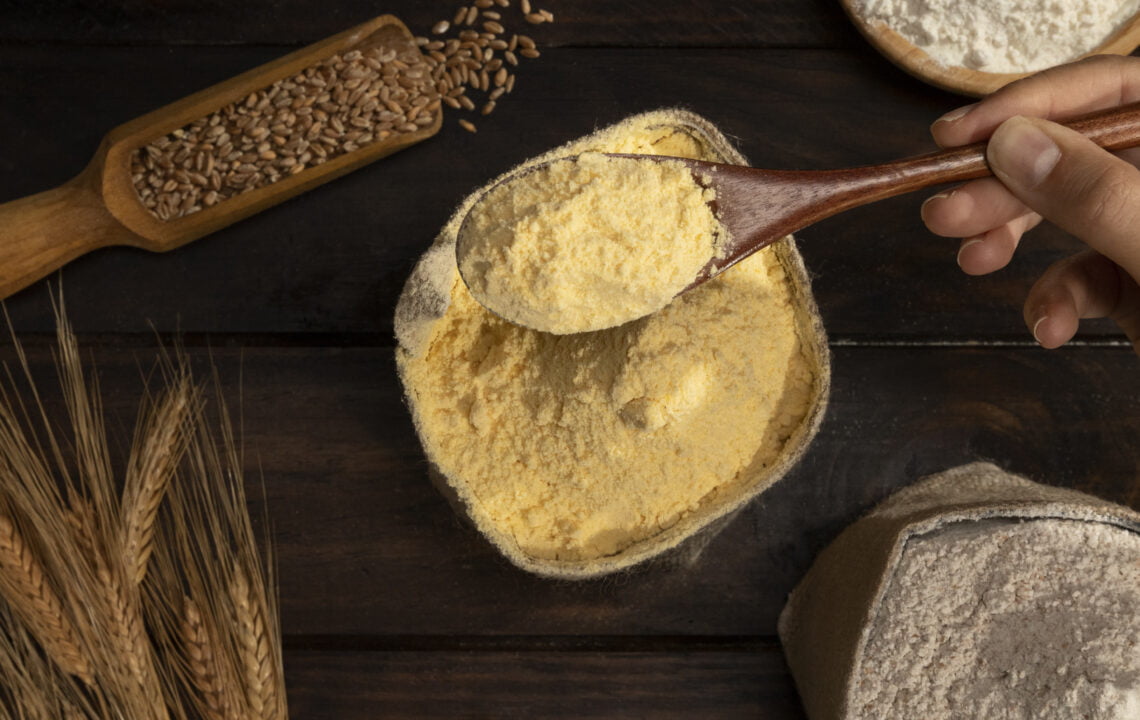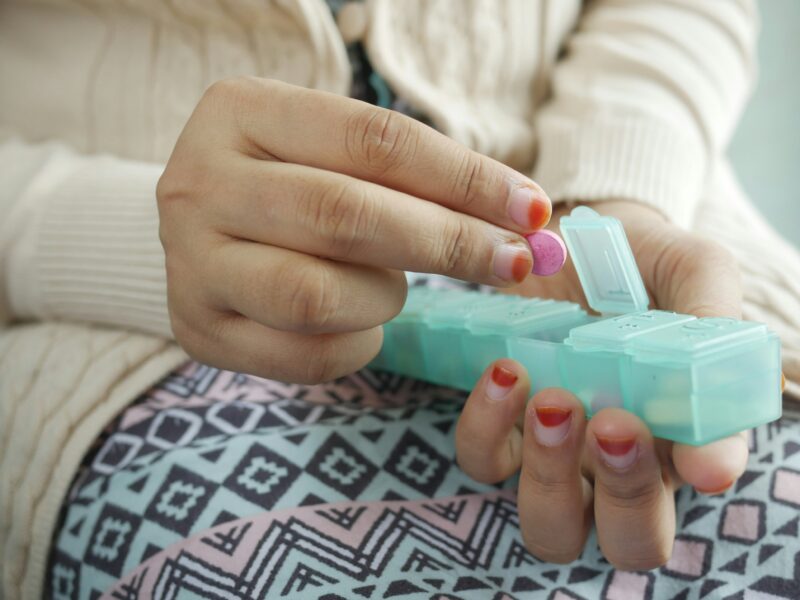Nutritional yeast is playing a significant role in our kitchen, particularly in vegan kitchens.
However, sometimes we use nutritional yeast for extended periods. But is it right? This raises the question in people’s minds: “Can nutritional yeast go bad?” Today, we’re here to answer this question for you.
Yes, nutritional yeast can go bad, and to know more about it, read the complete information we provide so you can understand nutritional yeast better.
Continue reading to arm yourself with essential knowledge for safeguarding your beloved nutritional yeast.
How Does Nutritional Yeast Spoil?
Food deterioration typically occurs due to various factors, including bacterial contamination, mold growth, yeast activity, oxidation, and enzyme reactions.
Fortunately, nutritional yeast has inherent characteristics that slow down spoilage:
Low Enzyme Activity: Nutritional yeast undergoes heating during processing, reducing enzyme activity that contributes to spoilage.
Limited Moisture Content: Being a dried food, nutritional yeast contains minimal moisture, inhibiting significant microorganism growth.
Protected from Oxidation: When stored in air-tight containers, oxidation, which leads to rancidity, occurs at a slower rate.
Fortunately, nutritional yeast has inherent characteristics that slow down spoilage:
Low Enzyme Activity: Nutritional yeast undergoes heating during processing, reducing enzyme activity that contributes to spoilage.
Limited Moisture Content: Being a dried food, nutritional yeast contains minimal moisture, inhibiting significant microorganism growth.
Protected from Oxidation: When stored in air-tight containers, oxidation, which leads to rancidity, occurs at a slower rate.
Factors Influencing the Shelf Life of Nutritional Yeast
Several factors can influence the shelf life of nutritional yeast, including:
Expiration Date: Always check the expiration date on the packaging. While nutritional yeast generally has a long shelf life, consuming it past the expiration date can affect its quality and flavor.
Storage Conditions: Proper storage is crucial for maintaining the freshness of nutritional yeast. Store it in a cool, dry place away from direct sunlight and moisture. Exposure to heat, humidity, or light can accelerate deterioration and spoilage.
Packaging: Nutritional yeast is often packaged in airtight containers or resealable bags to preserve its freshness. Ensure that the packaging remains sealed tightly to prevent air and moisture from entering, which can lead to mold growth and spoilage.
Expiration Date: Always check the expiration date on the packaging. While nutritional yeast generally has a long shelf life, consuming it past the expiration date can affect its quality and flavor.
Storage Conditions: Proper storage is crucial for maintaining the freshness of nutritional yeast. Store it in a cool, dry place away from direct sunlight and moisture. Exposure to heat, humidity, or light can accelerate deterioration and spoilage.
Packaging: Nutritional yeast is often packaged in airtight containers or resealable bags to preserve its freshness. Ensure that the packaging remains sealed tightly to prevent air and moisture from entering, which can lead to mold growth and spoilage.
Signs of Spoilage:
To determine if nutritional yeast has gone bad, look for the following signs of spoilage:
Changes in Color: Fresh nutritional yeast typically has a light golden or yellow color. If you notice any darkening, discoloration, or the presence of dark spots, it may indicate spoilage.
Unpleasant Odor: Nutritional yeast has a characteristic savory aroma. If it develops a sour, musty, or off-putting smell, it could be a sign of spoilage due to microbial growth.
Texture Changes: Fresh nutritional yeast has a dry, flaky texture. Any clumping, stickiness, or unusual texture changes may indicate moisture absorption and spoilage.
Changes in Color: Fresh nutritional yeast typically has a light golden or yellow color. If you notice any darkening, discoloration, or the presence of dark spots, it may indicate spoilage.
Unpleasant Odor: Nutritional yeast has a characteristic savory aroma. If it develops a sour, musty, or off-putting smell, it could be a sign of spoilage due to microbial growth.
Texture Changes: Fresh nutritional yeast has a dry, flaky texture. Any clumping, stickiness, or unusual texture changes may indicate moisture absorption and spoilage.

Storage Tips to Extend Shelf Life:
To prolong the shelf life of nutritional yeast and maintain its quality, follow these storage tips:
1. Store in a Cool, Dry Place: Keep nutritional yeast in a cool, dry pantry or cupboard away from heat, moisture, and sunlight.
2. Seal Properly: After each use, reseal the packaging tightly or transfer the yeast to an airtight container to prevent air exposure and moisture ingress.
3. Avoid Contamination: Use clean, dry utensils to scoop out nutritional yeast, and avoid introducing moisture into the container.
1. Store in a Cool, Dry Place: Keep nutritional yeast in a cool, dry pantry or cupboard away from heat, moisture, and sunlight.
2. Seal Properly: After each use, reseal the packaging tightly or transfer the yeast to an airtight container to prevent air exposure and moisture ingress.
3. Avoid Contamination: Use clean, dry utensils to scoop out nutritional yeast, and avoid introducing moisture into the container.
FAQs
Does nutritional yeast expire?
Yes, like most food products, nutritional yeast has an expiration date. However, it typically has a long shelf life if stored properly.
What are the signs that nutritional yeast has gone bad?
Signs of spoilage include changes in color, such as darkening or discoloration, an unpleasant odor, and unusual texture changes like clumping or stickiness.
Can you freeze nutritional yeast to extend its shelf life?
Freezing nutritional yeast is not necessary and may affect its texture and flavor. It’s best to store it in a cool, dry place at room temperature.
Can nutritional yeast cause food poisoning if it’s expired?
While consuming expired nutritional yeast may not necessarily cause food poisoning, it could lead to a loss of flavor and quality. It’s advisable to discard any yeast that appears spoiled or past its expiration date.
Can nutritional yeast be used in cooking if it’s expired?
It’s generally not recommended to use expired nutritional yeast for cooking, as its flavor and nutritional content may be compromised. It’s best to use fresh nutritional yeast for optimal results in recipes.
What causes nutritional yeast to go bad?
Nutritional yeast can go bad due to factors such as exposure to moisture, air, heat, and sunlight, which can lead to microbial growth and spoilage. Additionally, improper storage conditions or prolonged storage can contribute to deterioration.
How does sunlight contribute to the deterioration of nutritional yeast?
Sunlight exposure can lead to UV radiation damage, which may degrade the quality of nutritional yeast over time. Storing nutritional yeast in opaque or dark-colored containers can help protect it from sunlight and preserve its freshness.
Can unopened nutritional yeast expire?
Yes, even unopened nutritional yeast can expire. While unopened packages have a longer shelf life compared to opened ones, they can still deteriorate over time due to factors like storage conditions and the quality of packaging.
Yes, like most food products, nutritional yeast has an expiration date. However, it typically has a long shelf life if stored properly.
What are the signs that nutritional yeast has gone bad?
Signs of spoilage include changes in color, such as darkening or discoloration, an unpleasant odor, and unusual texture changes like clumping or stickiness.
Can you freeze nutritional yeast to extend its shelf life?
Freezing nutritional yeast is not necessary and may affect its texture and flavor. It’s best to store it in a cool, dry place at room temperature.
Can nutritional yeast cause food poisoning if it’s expired?
While consuming expired nutritional yeast may not necessarily cause food poisoning, it could lead to a loss of flavor and quality. It’s advisable to discard any yeast that appears spoiled or past its expiration date.
Can nutritional yeast be used in cooking if it’s expired?
It’s generally not recommended to use expired nutritional yeast for cooking, as its flavor and nutritional content may be compromised. It’s best to use fresh nutritional yeast for optimal results in recipes.
What causes nutritional yeast to go bad?
Nutritional yeast can go bad due to factors such as exposure to moisture, air, heat, and sunlight, which can lead to microbial growth and spoilage. Additionally, improper storage conditions or prolonged storage can contribute to deterioration.
How does sunlight contribute to the deterioration of nutritional yeast?
Sunlight exposure can lead to UV radiation damage, which may degrade the quality of nutritional yeast over time. Storing nutritional yeast in opaque or dark-colored containers can help protect it from sunlight and preserve its freshness.
Can unopened nutritional yeast expire?
Yes, even unopened nutritional yeast can expire. While unopened packages have a longer shelf life compared to opened ones, they can still deteriorate over time due to factors like storage conditions and the quality of packaging.





